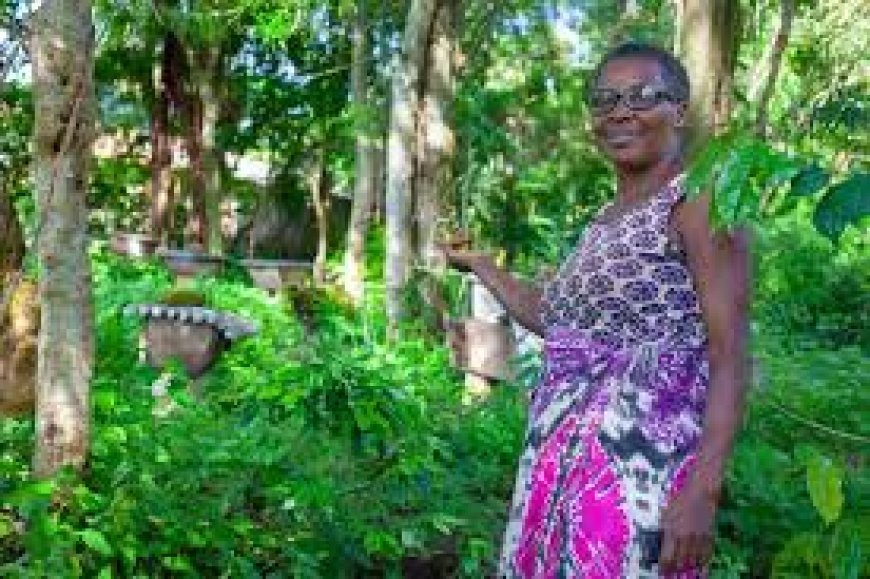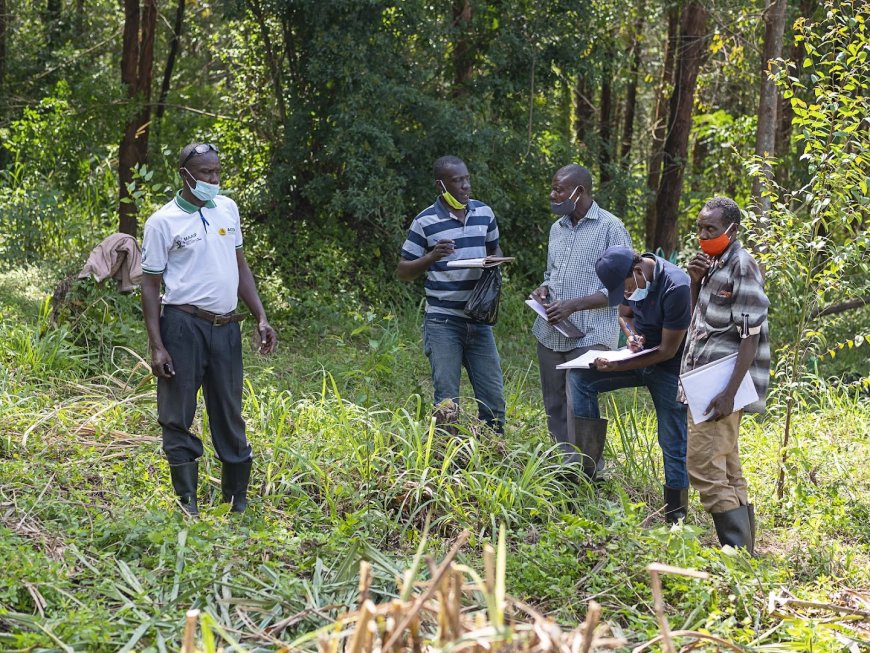Lives uplifted as rural tree farmers reap millions from carbon trading.
The triple win model of sustainable livelihood improvement, Biodiversity conservation and climate change mitigation. This will contribute to the target of achieving land based protection, scale up access to financing and community sustainable use

Rural farmers in Uganda are countering the effects of climate change by planting trees to absorb carbon dioxide and restore the deforested environment. The scheme, Trees for Global Benefits (TGB), has farmers planting indigenous trees and getting paid for the amount of carbon their trees sequester from the atmosphere.
Tree farmers from Elgon region, Kasese, Rubirizi, Murchison regions have reaped million from the carbon offsetting project as they conserve the environment.
Elgon farmers received a cheque of UGX 165 Million trading over the year, Rubirizi received UGX 267 Million, Masindi got UGX 166 Million, Hoima received 207 Million among others.
How Carbon Credit works
Carbon sequestration is the removal and storage of carbon from the atmosphere by trees, shrubs, and organic matter like soil.
When trees mature, they increase the absorption of carbon from the atmosphere.
When Farmers grow indigenous trees, clients of carbon calculate the growth and storage of carbon over time to accurately depict the carbon sequestration rate of trees and pay according to the cabin credits discovered. This business is both for environment conservation and making money while reducing green house emissions and earth warming.
Peter Nyeko, a businessman and member of Hoima Tree For Global Benefit (TGB) Farmers Group said that he invested Shs20 Million along with one partner in 20 hectares of trees and earned Shs3.2 Billion in less than 10 years.
The Masindi based farmer said that despite the work involved in clearing the land and caring for the trees, a tree bank is the best investment he could miss venturing into.
“You can invest Shs20 Million and in about 10 years, you’re harvesting trees worth about Shs3.2B Billion. You buy a seedling but once that seedling grows to become a fully grown tree in several years, you will get good money. As long as you’re willing to wait for a return on your capital employed, it’s pretty amazing. It’s just like a trust fund,” he said.
He however warns tree farmers to ensure the environment is well protected.
“There are some breeds which are really bad; they really cause a lot of destruction and should not be planted near the water. If we plant trees around water sources, it might dry up the water, then the water might never reach water bodies,” he said.


Carbon measurement in the indigenous tree forest by a credit buyer
Indegenous tress for carbon trading
Beatrice Ahimbisibwe, an indigenous tree farmer in Hoima says that she conceived the idea of tree farming after witnessing tree farmers receiving million of shillings from carbon selling.
She adds that when she started planting trees in 2003, it took her less that 10 years to start selling carbon credits which she says has made it possible to sustain her family.
“I embarked on different indigenous tree species including Tanaria, Prynas, Fagara and Ficas. These are some of the species recommended for carbon credits,” Ahimbisibwe says.
She adds: “I started growing indigenous trees in 2003, but after a few years I started selling carbon credit and I can now have a sustainable family and have a decent home. People are coming from different places to see how we are able to do it.”
According to Ahimbisibwe, tree planting takes dedication and some patience for a few years but adds that the benefits are many including cash, environmental conservation, and soil erosion control.
“I was a subsistence farmer before I dedicated my time to tree farming project and started planting native and naturalized trees on my piece of land which eventually after being patient for a few years yielded through sequestering carbon dioxide, while the trees also helped curb soil erosion and keep water ways free from siltation,” she said
Robert Nabanyumya, the Chairman of The Environment Conservation Trust (ECOTRUST) based in Uganda said that as ECOTRUST’s niche in designing and implementing market based interventions for conservation, small holder farmers are always recognized and paid for carbon trading through partnerships and funds mobilization to enhance farmers performance.
“There has been increasing trend in mobilizing funds for community carbon incomes through a blended financing including public and private donors to deliver cot effective initiatives through community engagement” he said
While the Executive Director ECOTRUST Pauline Nantongo is optimistic that the 3 thematic areas including Biodiversity conservation, sustainable livelihood improvement, climate change mitigation/adaptation, will go a long way in building climate resilience communities and landscape through partnership.
“The strategy framework 2022-2026 is focusing on a triple win model of sustainable livelihood improvement, Biodiversity conservation and climate change mitigation. This will contribute to the target of achieving land based protection, scale up access to financing and community sustainable use” she said.
Since 2003, ECOTRUST urged the communities in Uganda near these protected areas to voluntarily grow indigenous trees together with their food crops. Besides absorbing carbon, the trees would also stop soil erosion and protect water bodies from siltation.
TGB is registered on the voluntary carbon market and certified under the Plan Vivo standard..credits are sold to buyers through a fully transparent platform, the markit registry
The TGB model also ensures that 60% of the money paid for the carbon credits goes directly into the pockets of the Farmers, 10% goes into a risk fund and 30% goes into farmer monitoring, Capacity building activities and administration expenses
As TGB of 2021 has achieved a milestone of sequestering just over 2 million tonnes of C02, making it the biggest smallholder agro-forestry carbon offset project in Africa - under the Plan Vivo standard
The project which started with just 33 farmers in Bushenyi District back in 2003 has expanded to 13 districts with almost 20,000 farmers over the years












